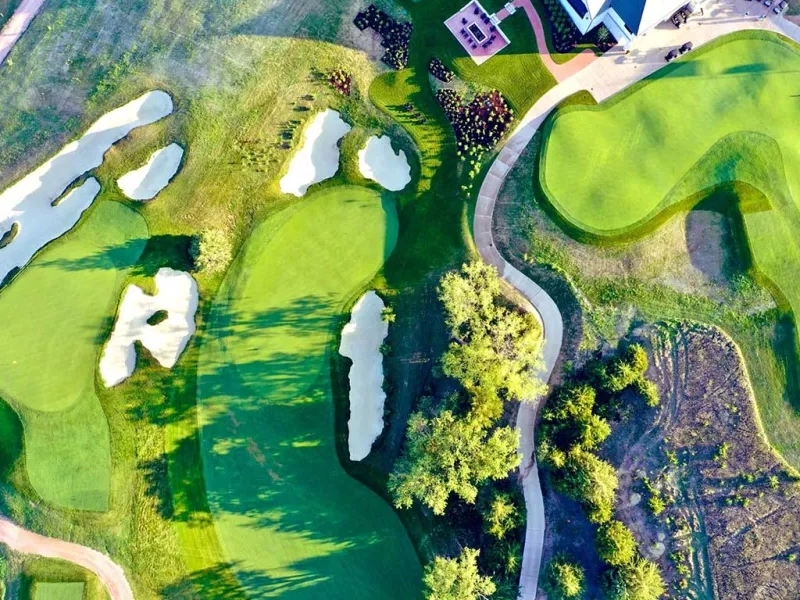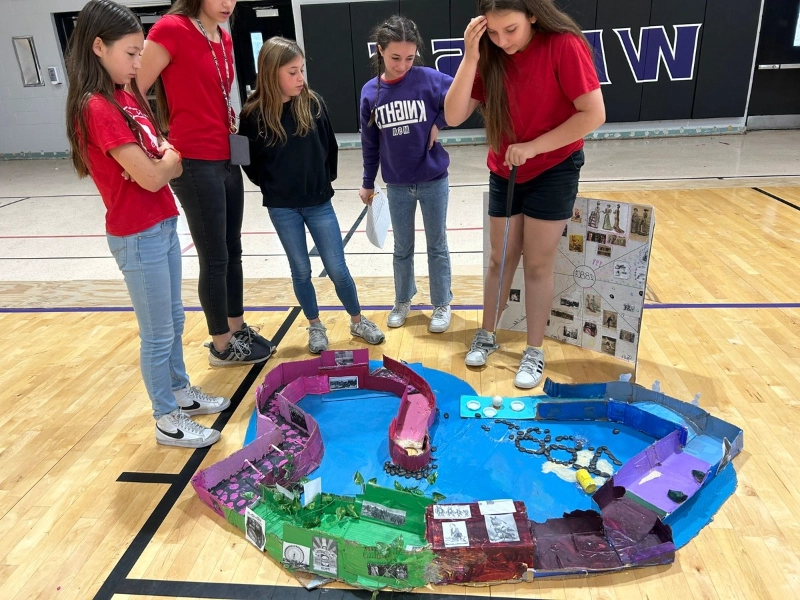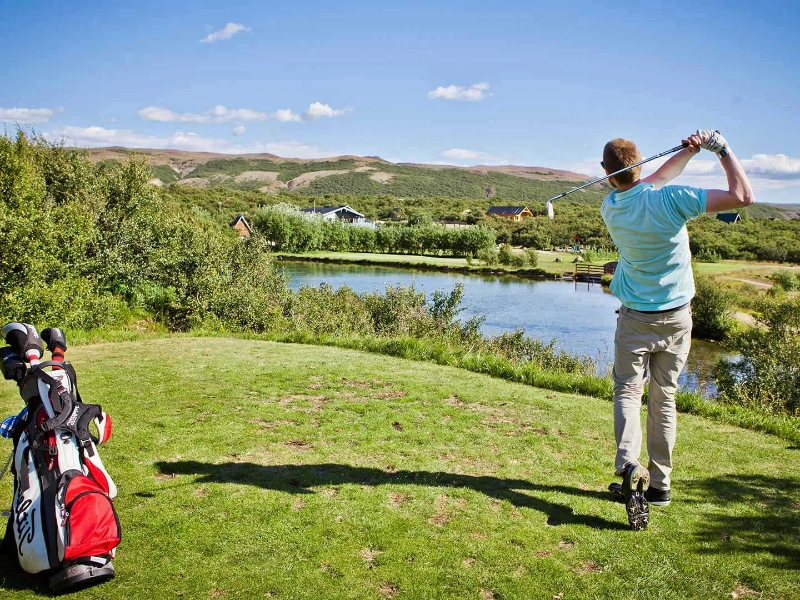Using drought-tolerant plants, organic fertilisers, and erosion control techniques, sustainable golf facilities stress water conservation and soil health. By gathering and reusing stormwater runoff, running electric equipment, and converting to renewable diesel and heating oil, they give energy efficiency top priority. Greenies also inspire golfers to play more responsibly by walking 18 holes instead of using a cart, fixing ball markings and divots, and honouring specifically important locations on the course for the environment and wildlife.

 Because they guarantee that fairways and greens are sufficiently hydrated without over-watering, effective irrigation systems assist lower water waste. Golf facilities can maximise their irrigation schedule to satisfy real course conditions by doing regular system audits and including soil moisture sensors into the management process, therefore reducing unneeded water consumption. Another proactive step taken to help lower the need for more water is the use of drought-tolerant grasses and plants.
Reusing or gathering rainwater to irrigate the course or using recycled water—also referred to as "reclaimed water"—are two water-conservation techniques. Originally brought in the Southwest due to limited freshwater supplies, this method is now the norm and lets golf courses avoid pouring wastewater into surrounding rivers and streams.
By building riparian vegetation buffer strips next wetlands, streams, and other bodies of water, golf courses can also help to safeguard surface water quality. Before they can reach surface water, these natural filtration systems gather nutrients, pollutants, sediments, and pesticides, therefore enhancing the general water quality.
Because they guarantee that fairways and greens are sufficiently hydrated without over-watering, effective irrigation systems assist lower water waste. Golf facilities can maximise their irrigation schedule to satisfy real course conditions by doing regular system audits and including soil moisture sensors into the management process, therefore reducing unneeded water consumption. Another proactive step taken to help lower the need for more water is the use of drought-tolerant grasses and plants.
Reusing or gathering rainwater to irrigate the course or using recycled water—also referred to as "reclaimed water"—are two water-conservation techniques. Originally brought in the Southwest due to limited freshwater supplies, this method is now the norm and lets golf courses avoid pouring wastewater into surrounding rivers and streams.
By building riparian vegetation buffer strips next wetlands, streams, and other bodies of water, golf courses can also help to safeguard surface water quality. Before they can reach surface water, these natural filtration systems gather nutrients, pollutants, sediments, and pesticides, therefore enhancing the general water quality.
 Leaders in waste control and recycling are golf courses. On the course, Pebble Beach Resorts compiles food waste, recycles plastic and cardboard, and makes use of biosolids from the wastewater treatment plant of its parent company for fertiliser. Chambers Bay, the U.S. Open venue this year, makes use of recovered ocean plastic for its tees and other gear.
Courses give employing recycled materials a priority for renovation projects. This method lowers shipping emissions and promotes local businesses from recycled mulch and compost to locally obtained stone for paths.
Through energy audits, use of high-efficiency lighting and solar electricity for golf carts, courses also help to minimise their energy footprint. Furthermore, they concentrate on using ecologically friendly fertilisers and lowering pesticide and herbicide use by means of biological management techniques. Through improving native plants, building animal habitat corridors, and community involvement through educational initiatives, they help support biodiversity. These environmentally friendly projects help the nearby ecosystem to be healthy and benefit the surroundings.
Leaders in waste control and recycling are golf courses. On the course, Pebble Beach Resorts compiles food waste, recycles plastic and cardboard, and makes use of biosolids from the wastewater treatment plant of its parent company for fertiliser. Chambers Bay, the U.S. Open venue this year, makes use of recovered ocean plastic for its tees and other gear.
Courses give employing recycled materials a priority for renovation projects. This method lowers shipping emissions and promotes local businesses from recycled mulch and compost to locally obtained stone for paths.
Through energy audits, use of high-efficiency lighting and solar electricity for golf carts, courses also help to minimise their energy footprint. Furthermore, they concentrate on using ecologically friendly fertilisers and lowering pesticide and herbicide use by means of biological management techniques. Through improving native plants, building animal habitat corridors, and community involvement through educational initiatives, they help support biodiversity. These environmentally friendly projects help the nearby ecosystem to be healthy and benefit the surroundings.
 Running course maintenance tools on renewable energy helps to lower reliance on fossil fuels and carbon footprint. By offering onsite electricity from solar and wind farms, golf clubs' utility costs are reduced and a better energy future is contributed to.
Greywater irrigation and rainfall collecting systems use rainwater to irrigate greeneries, hence lessening of need on nearby water supplies. Changing thirsty grasses for drought-resistant types helps to further lower water usage. Integrated Pest Management and organic fertilisers help to reduce the use of chemical sprays.
On sustainable golf courses, biodiversity is crucial since it provides home for native species and plants that support the integrity of the nearby ecosystems. This draws tourists and raises community involvement, therefore improving the beauty of the surroundings.
At last, cutting single-use plastic and supplying environmentally friendly golf tees helps to lower waste. Urge players to use recyclable or compostable food containers and to carry reusable water bottles. Including energy-saving technologies into the design process will help with new building or remodelling projects.
Running course maintenance tools on renewable energy helps to lower reliance on fossil fuels and carbon footprint. By offering onsite electricity from solar and wind farms, golf clubs' utility costs are reduced and a better energy future is contributed to.
Greywater irrigation and rainfall collecting systems use rainwater to irrigate greeneries, hence lessening of need on nearby water supplies. Changing thirsty grasses for drought-resistant types helps to further lower water usage. Integrated Pest Management and organic fertilisers help to reduce the use of chemical sprays.
On sustainable golf courses, biodiversity is crucial since it provides home for native species and plants that support the integrity of the nearby ecosystems. This draws tourists and raises community involvement, therefore improving the beauty of the surroundings.
At last, cutting single-use plastic and supplying environmentally friendly golf tees helps to lower waste. Urge players to use recyclable or compostable food containers and to carry reusable water bottles. Including energy-saving technologies into the design process will help with new building or remodelling projects.